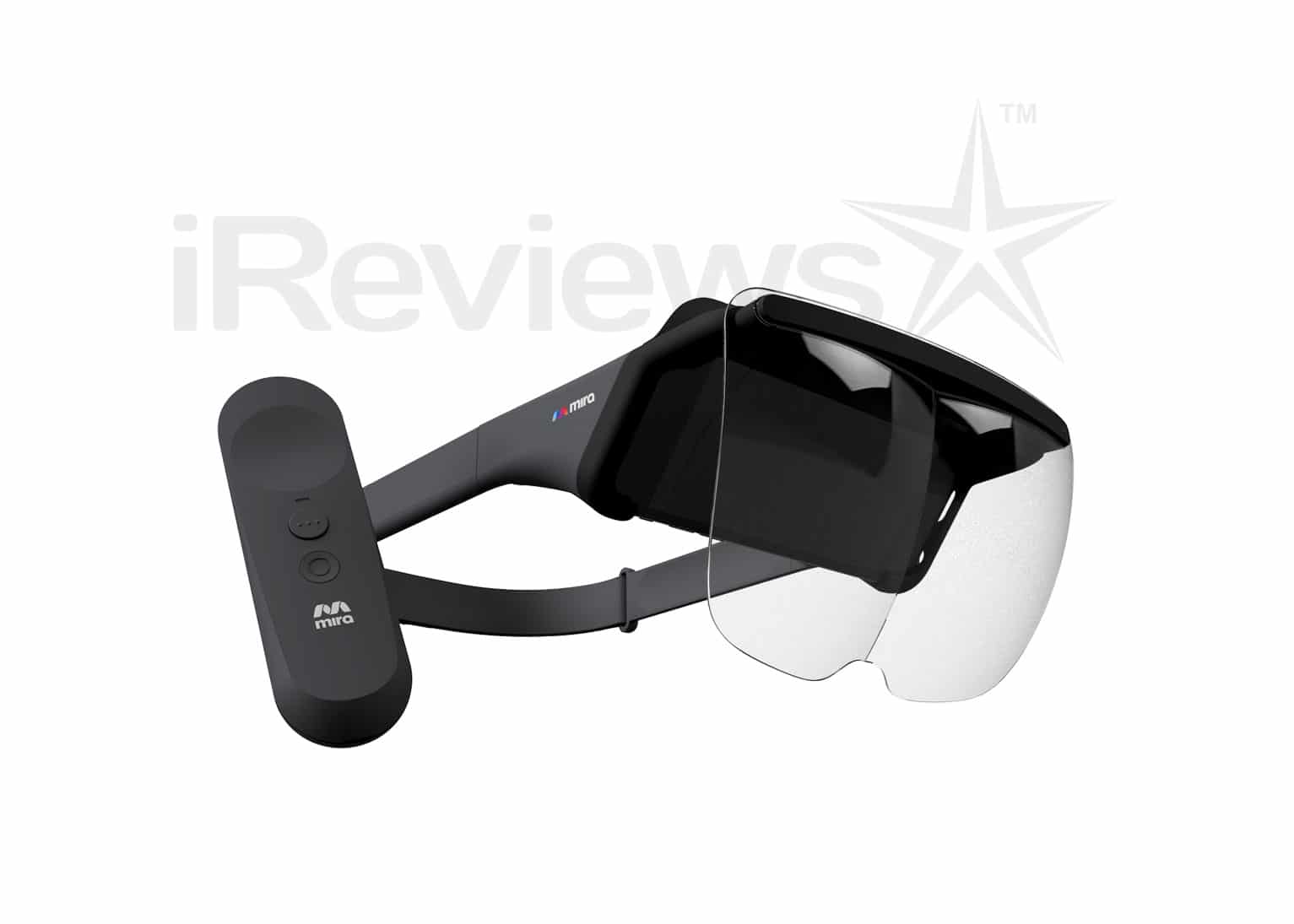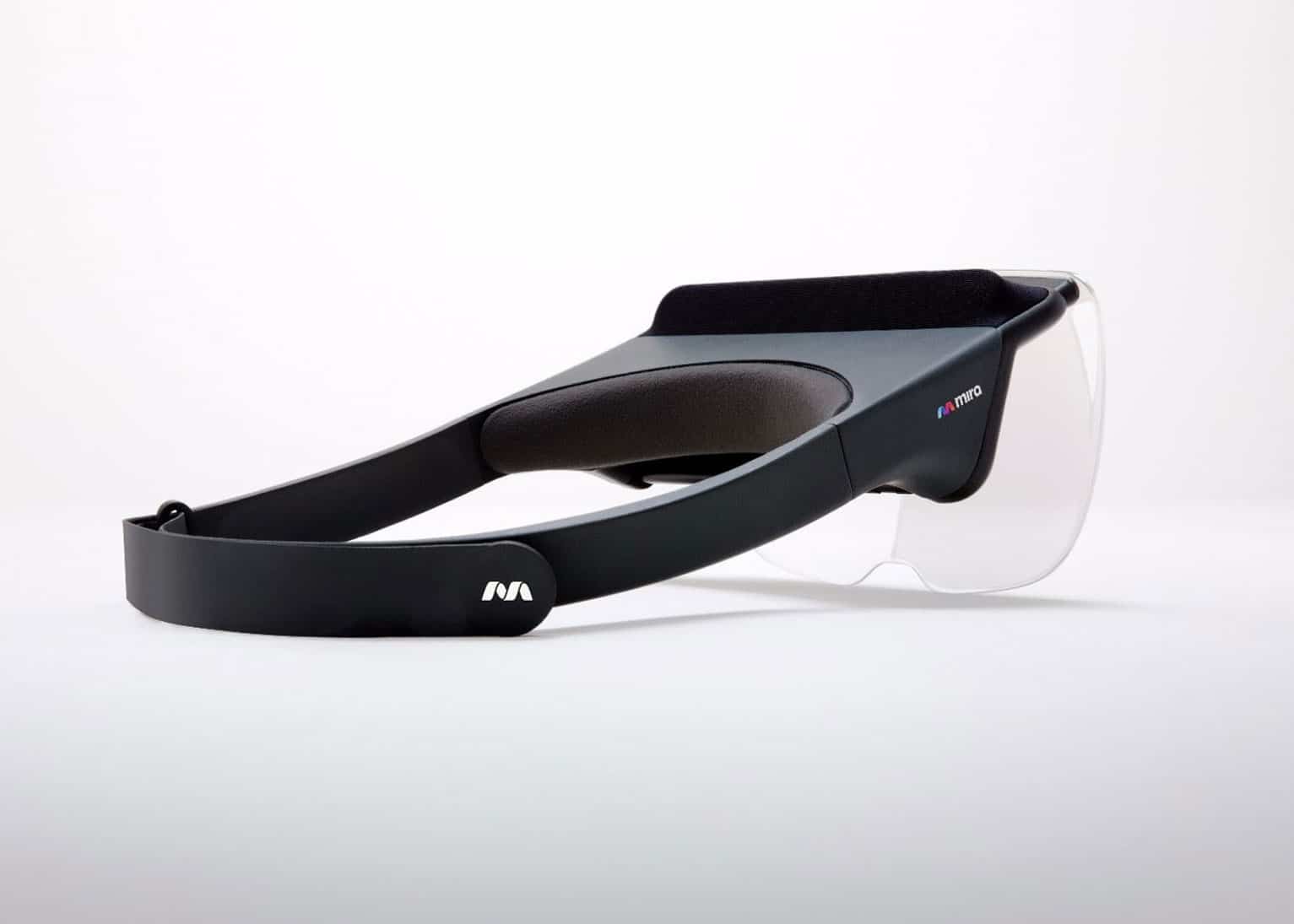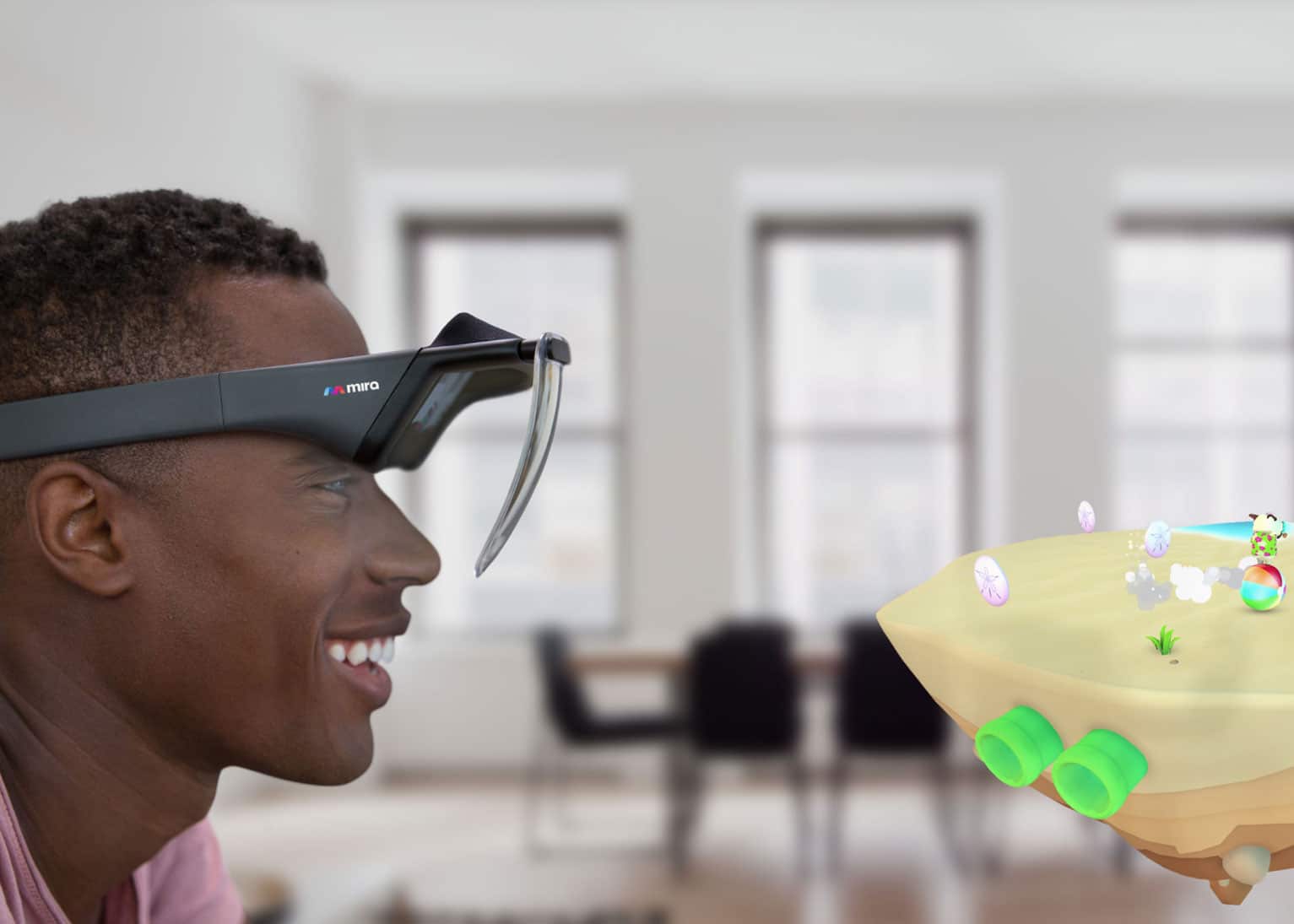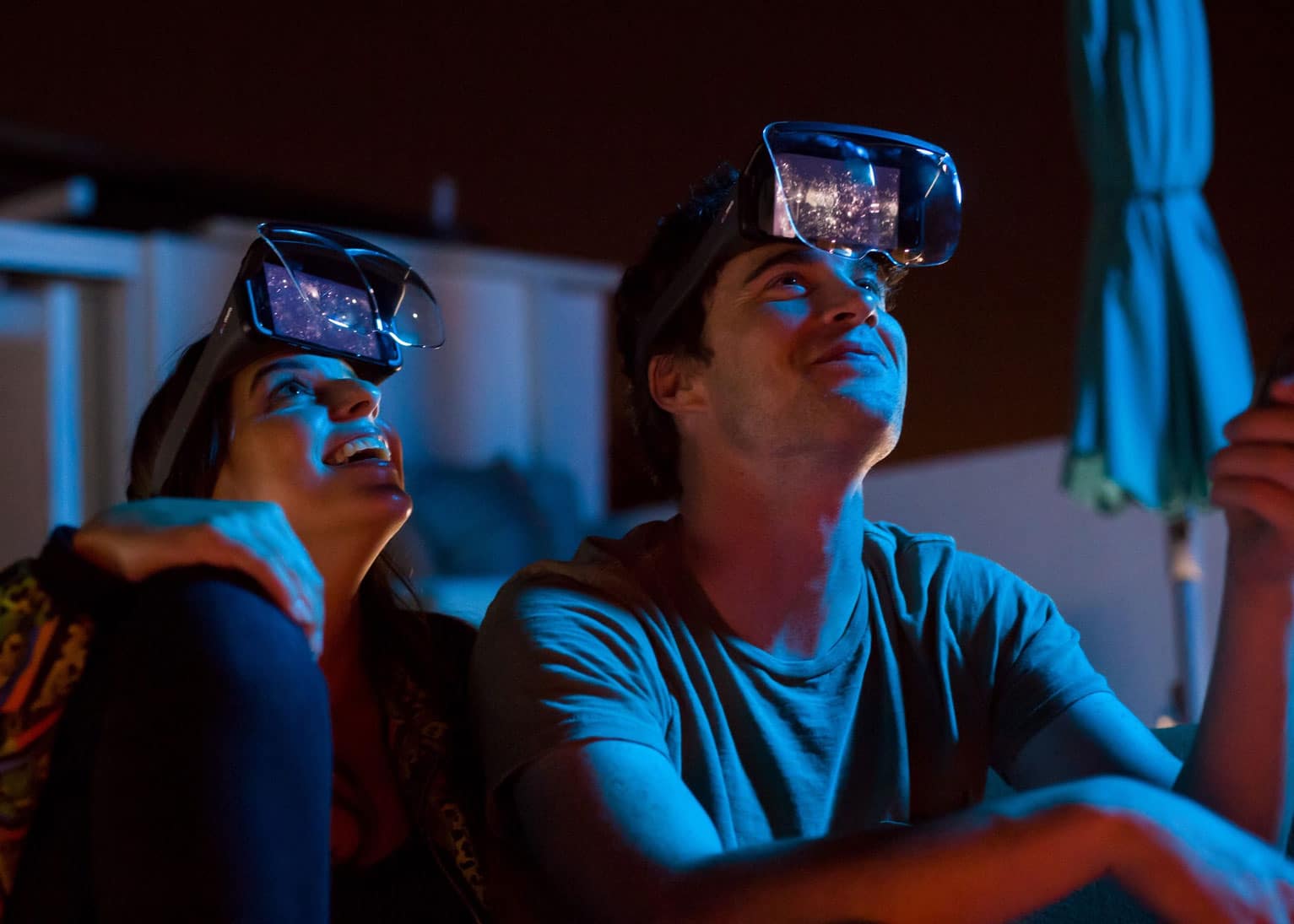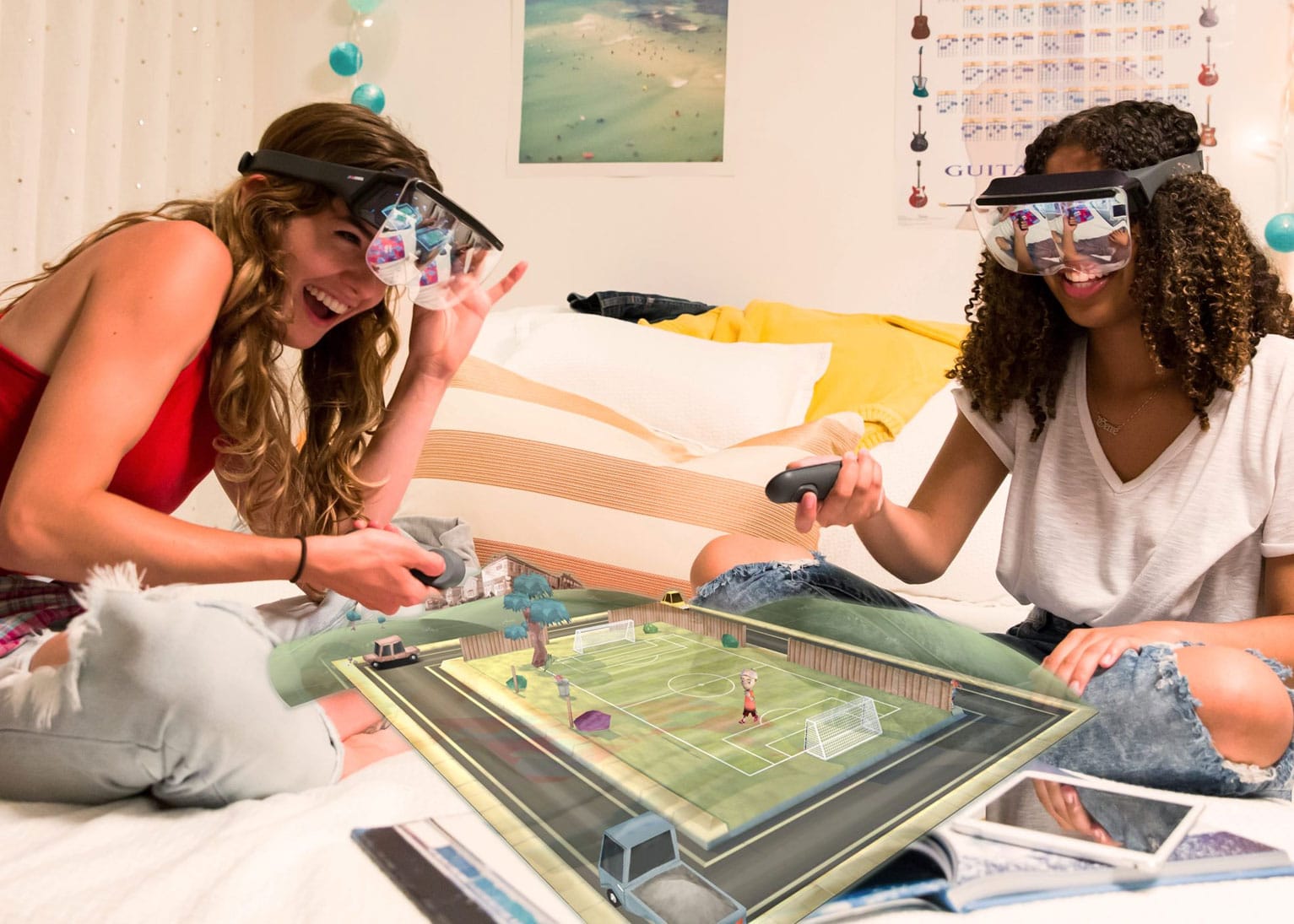Apple is allocating a rather sizeable portion of its resources towards creating the next mainstream Augmented Reality (AR) device – focusing on what they believe is a “technology for everyone— not unlike smartphones.” Mira Prism, a Los Angeles-based startup, is using its $1.5 million seed round by Sequoia to develop a $99 AR headset that overlays holographic images from your smartphone onto the real world.
Intelligent Design Features
 With some of the Best Augmented Reality Glasses hitting the marketplace this year, there seems to be a wide-open niche for an affordable headset. Positioned as a less expensive Google Daydream, the Mira Prism integrates with your smartphone’s front-facing camera. By simply sliding your iPhone into the headset, users get to experience immersive holographic content.
With some of the Best Augmented Reality Glasses hitting the marketplace this year, there seems to be a wide-open niche for an affordable headset. Positioned as a less expensive Google Daydream, the Mira Prism integrates with your smartphone’s front-facing camera. By simply sliding your iPhone into the headset, users get to experience immersive holographic content.
According to MIT Technology Review, the Mira Prism headset displays its images in a similar fashion to stereoscopic 3D for Virtual Reality (VR). “The images reflect off a clear lens and into your eyes so you perceive VR objects at a depth in front of you.” Lacking the SLAM technology critical to AR’s environmental awareness, the Mira Prism uses a smartphone’s front-facing camera to compensate for its limited positional tracking.
The Augmented Reality Market
 Only $2.3 million headsets (mostly for VR) were sold worldwide in the first three months of 2017, according to the IDC. With most experts claiming lack of content and extraordinarily high prices being the main two reasons behind the lack of consumer demand. With high-end AR headsets, like the Microsoft HoloLens, retailing for around $3,000 – it seems as if the market is isolated to the serious gamers and developers interested in being on the front lines of AR/VR innovation.
Only $2.3 million headsets (mostly for VR) were sold worldwide in the first three months of 2017, according to the IDC. With most experts claiming lack of content and extraordinarily high prices being the main two reasons behind the lack of consumer demand. With high-end AR headsets, like the Microsoft HoloLens, retailing for around $3,000 – it seems as if the market is isolated to the serious gamers and developers interested in being on the front lines of AR/VR innovation.
The Prism is different from VR headsets in that it doesn’t require anything else outside of your smartphone. No computer connection. No HDMI plugs. No wires. Sliding your smartphone into the Prism headset gives you 360-degree game play overlaid on the real world. You even have the option of linking to a nearby headset for multiplayer action.
Performance Issues
 So what’s stopping the Mira Prism from being every household’s first AR headset? For one, the company made a risky choice by not incorporating SLAM technology. Relying on a smartphone camera for positional tracking could limit performance, especially with gaming software that relies on this technology. Secondly, the Mira Prism needs a steady influx of content in order to keep its high-tech consumer base satisfied. Limited content is usually the death of any new device and without an extensive library, to begin with, Mira Prism will be relying heavily on its development community.
So what’s stopping the Mira Prism from being every household’s first AR headset? For one, the company made a risky choice by not incorporating SLAM technology. Relying on a smartphone camera for positional tracking could limit performance, especially with gaming software that relies on this technology. Secondly, the Mira Prism needs a steady influx of content in order to keep its high-tech consumer base satisfied. Limited content is usually the death of any new device and without an extensive library, to begin with, Mira Prism will be relying heavily on its development community.
The reason Apple favors Augmented Reality over Virtual Reality is simple: AR is more practical. The technology can be used in a medical settings training surgical residents, in everyone’s home for entertainment, or for navigational purposes while traveling across the country. It’s highly versatile and works well integrates nicely in everyday life. Finally, unlike VR headsets, the AR visors are usually ok to wear in public. Unfortunately, the Mira Prism is not one of those visors and according to COO Matt Stern, “we’re definitely not encouraging people to walk around with it.”
Bottom Line
Congratulations to Mira Prism for developing the first super affordable AR headset. With that being said, there’s a lot of work ahead of the startup in the way of content creation. The company also needs to find a way to make their AR visor user-friendly – allowing us to experience full immersion while walking around in public.
The Unity-based SDK is available for download in August (2017). Consumers will be able to get their hands on the Mira Prism right in time for the holiday season.
Sources: Mira Prism, Apple Insider, MIT Technology Review



